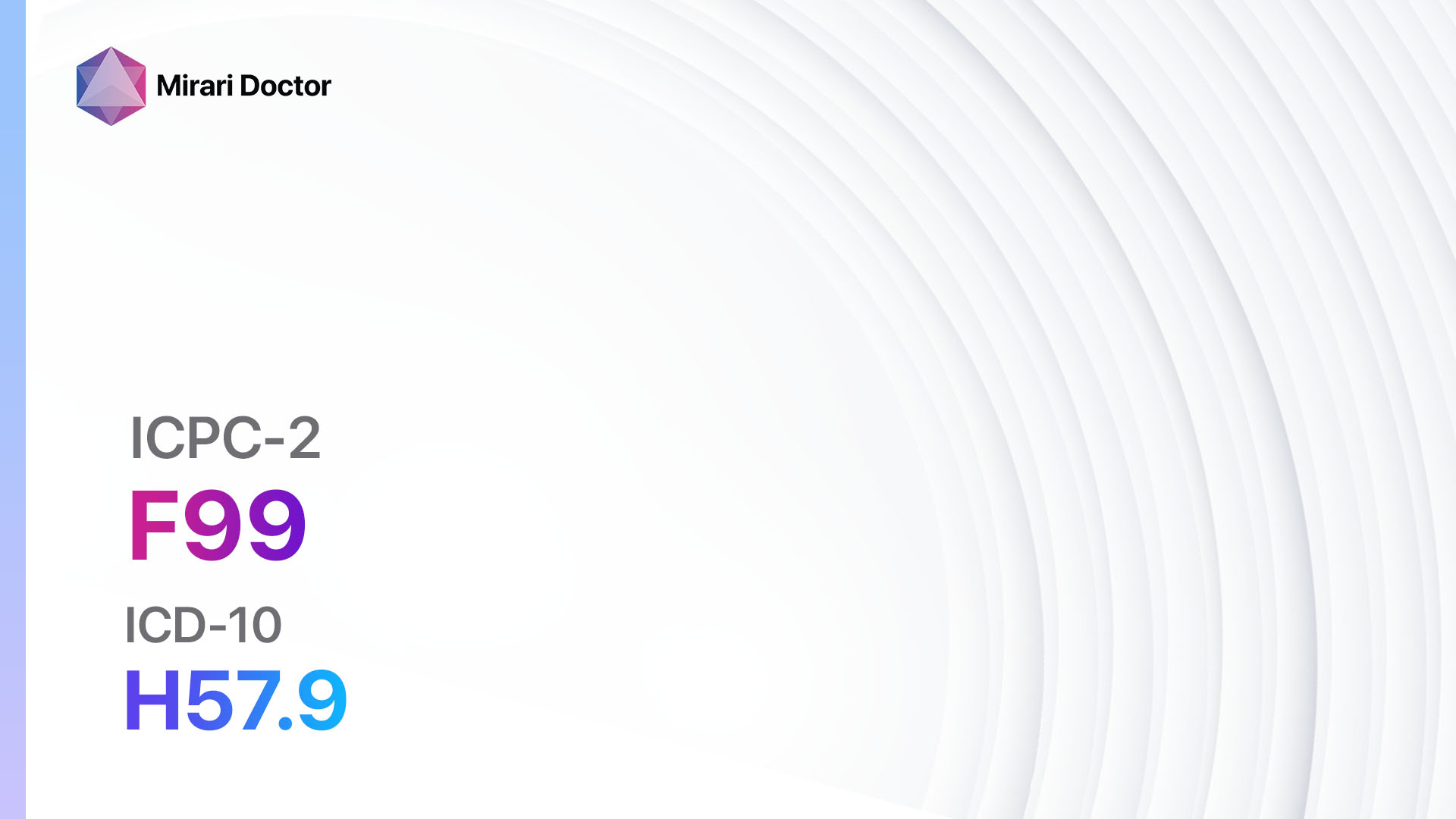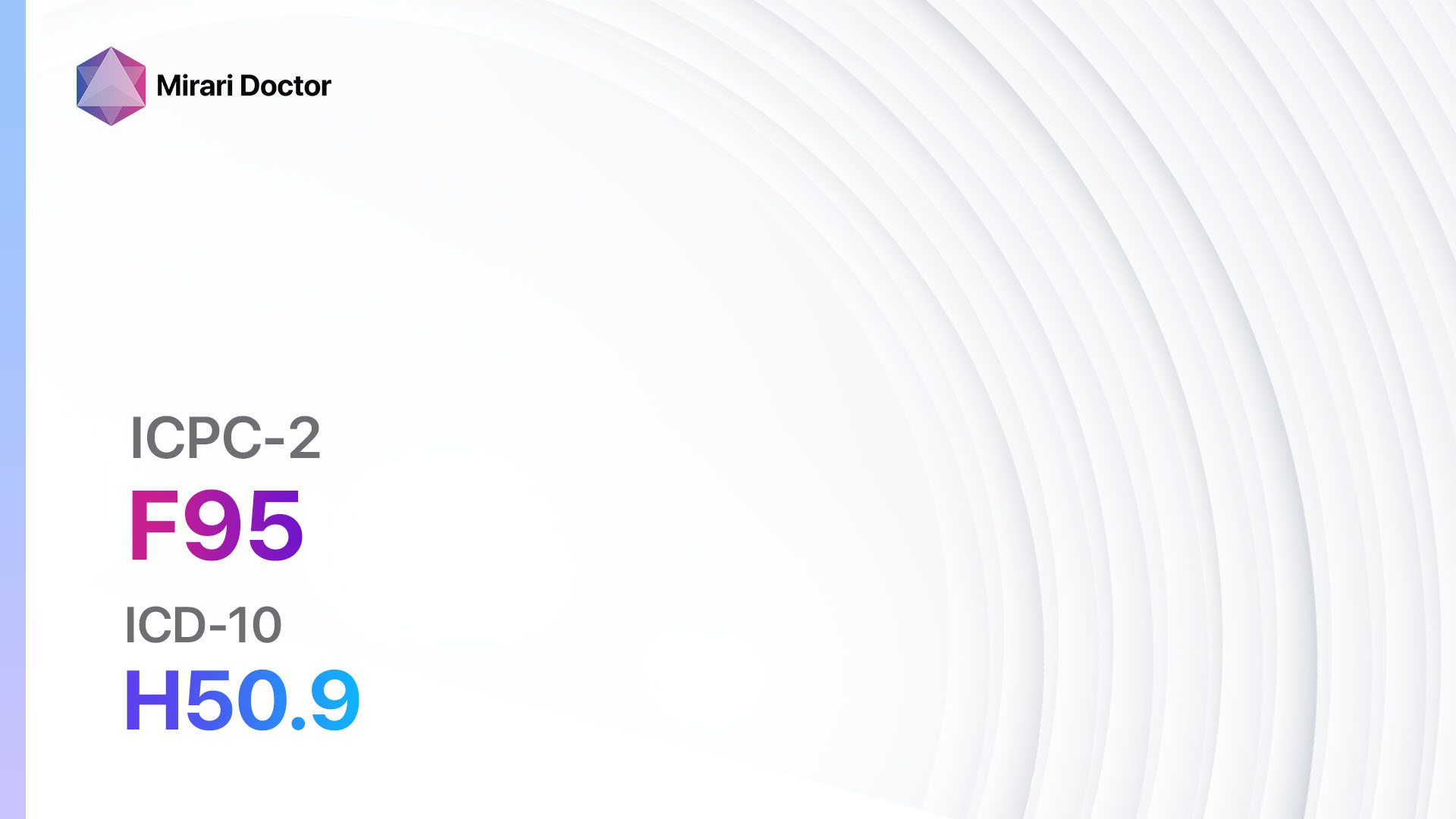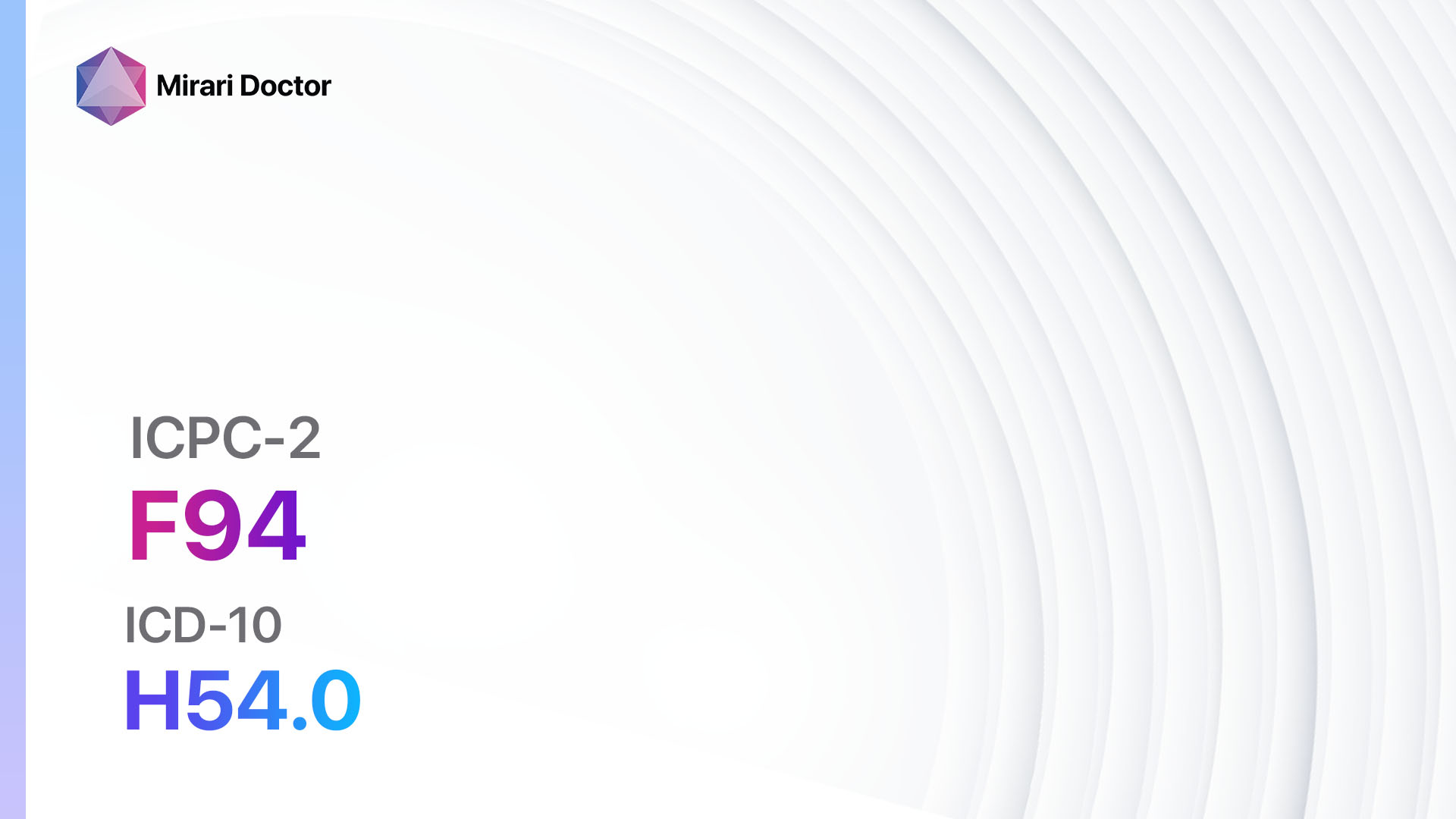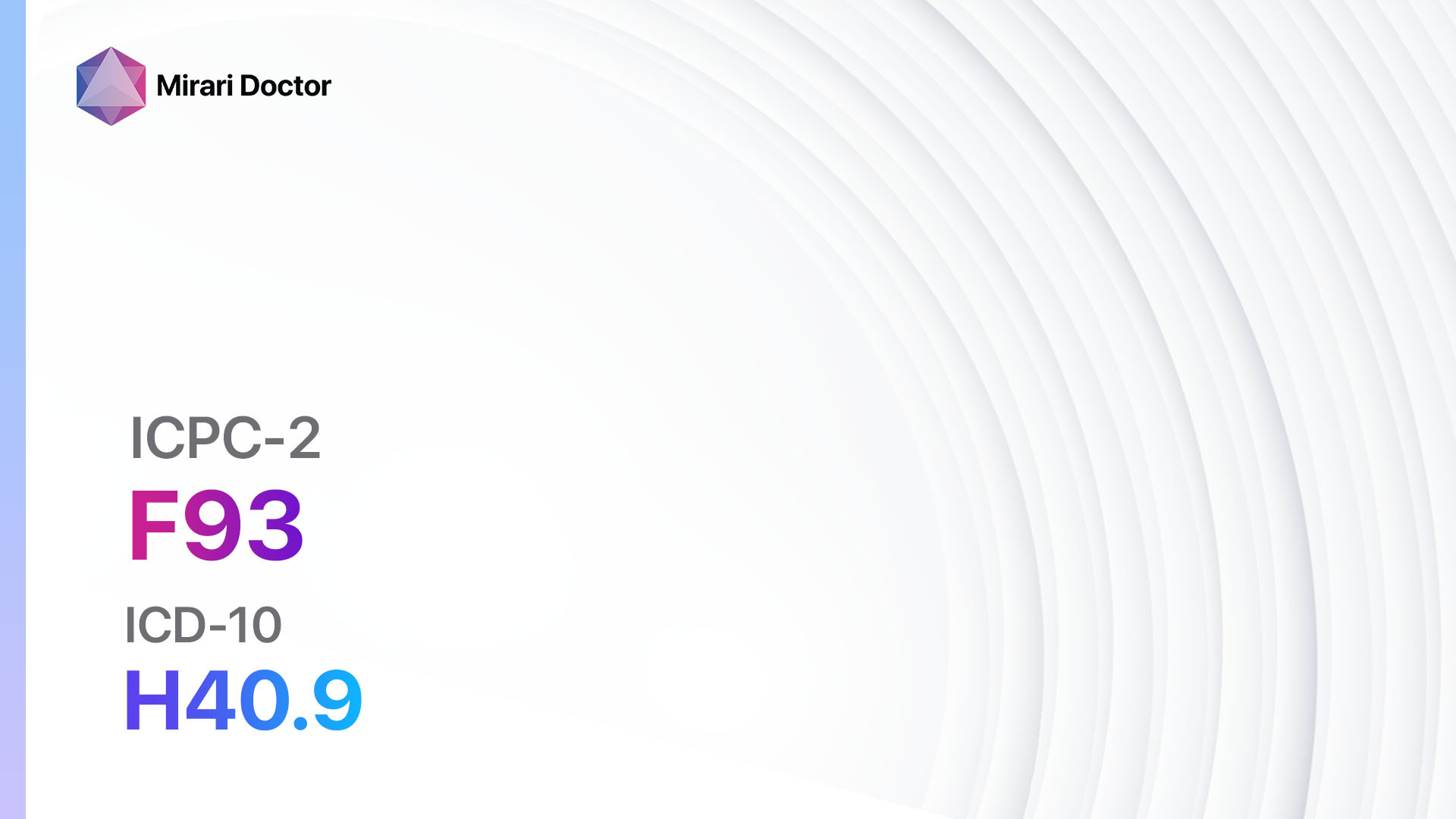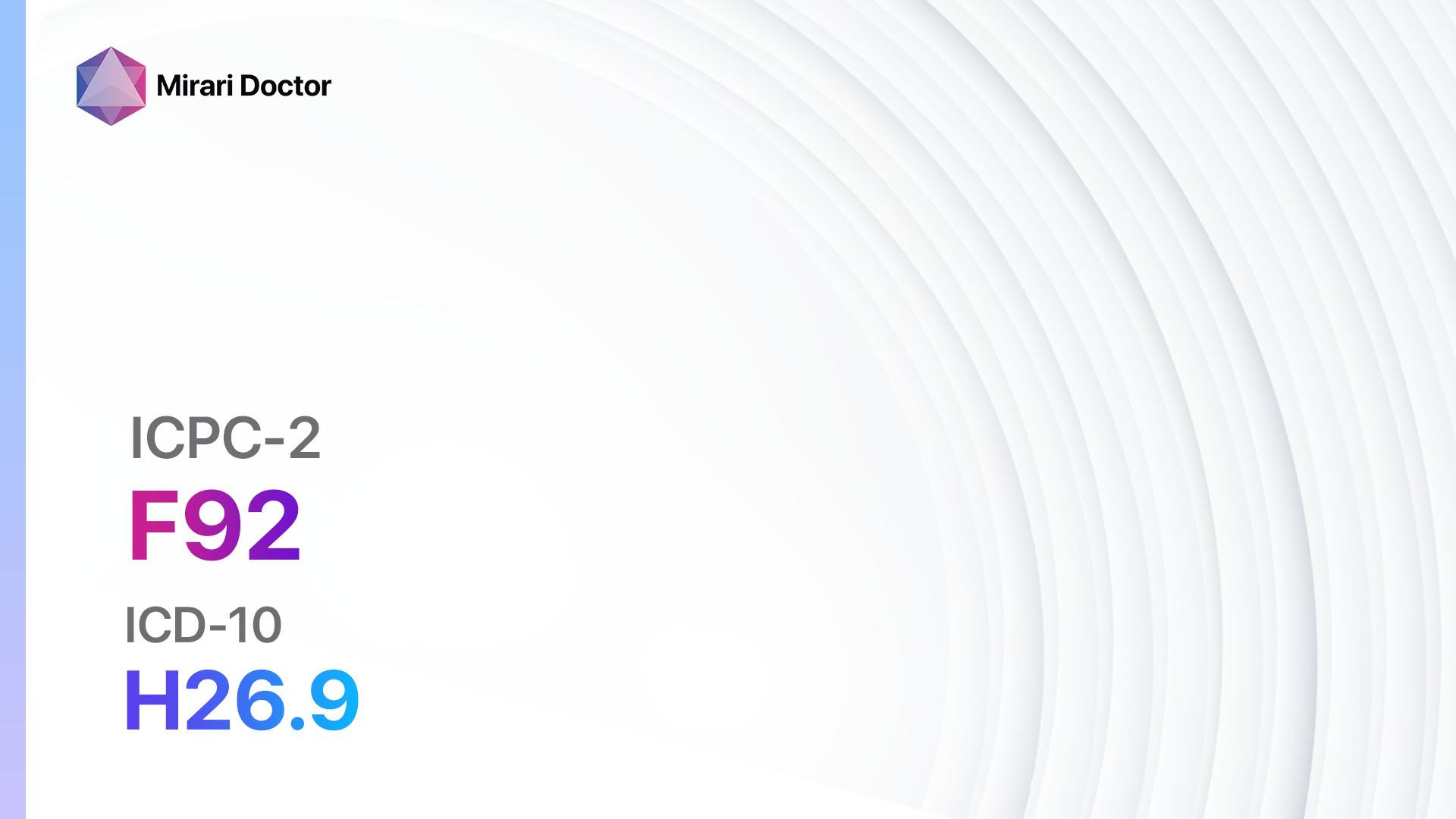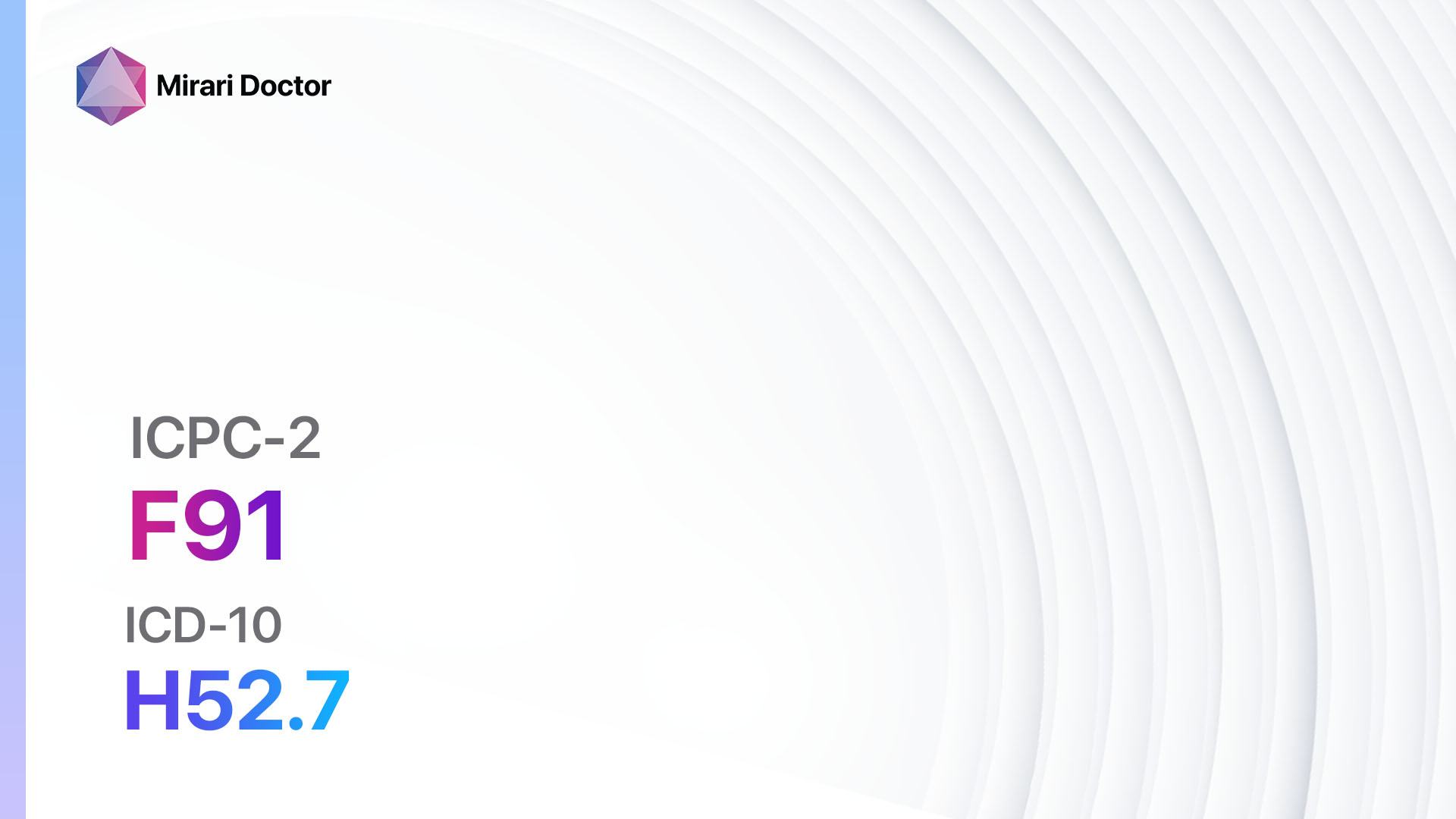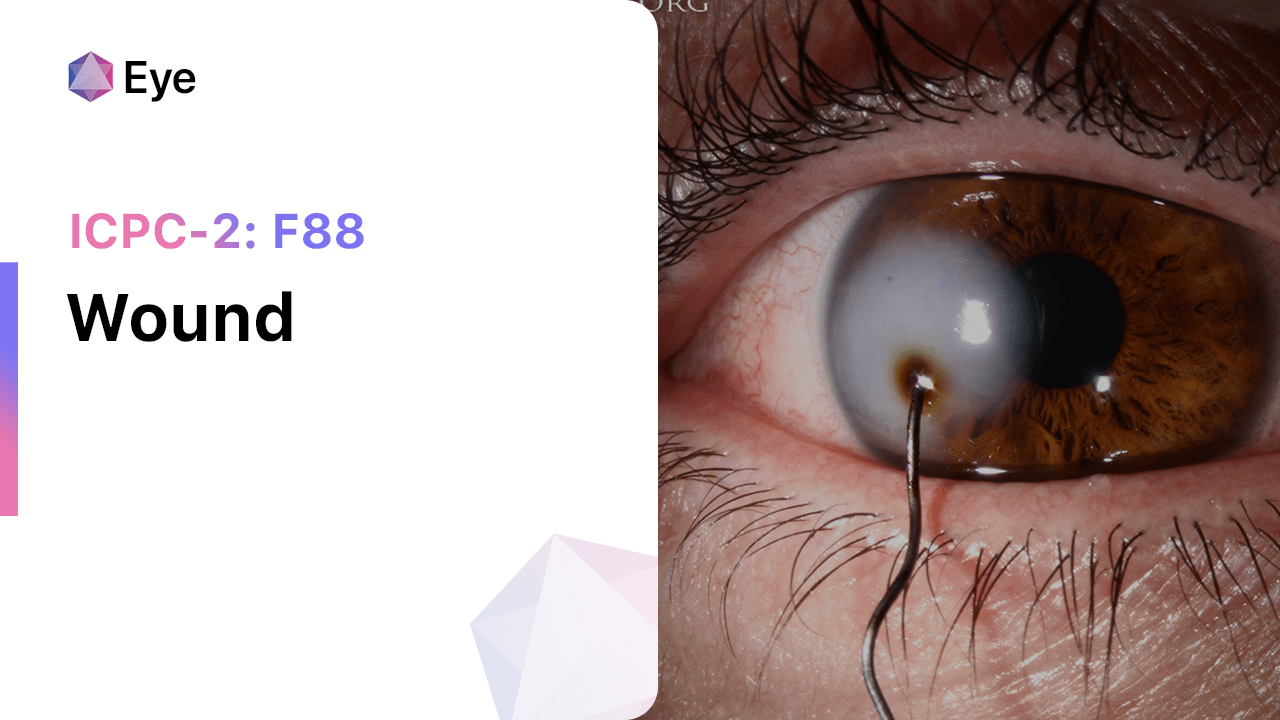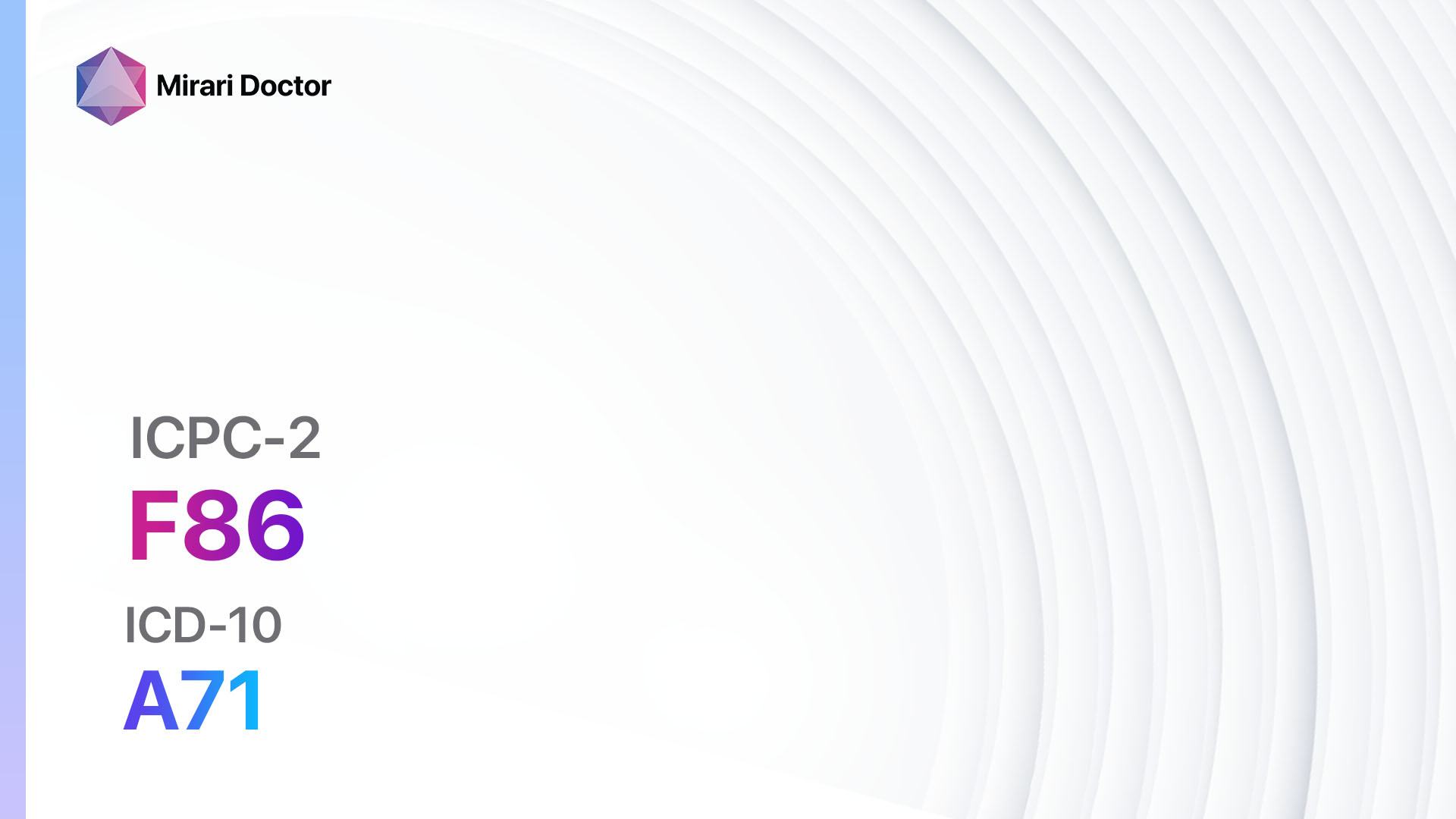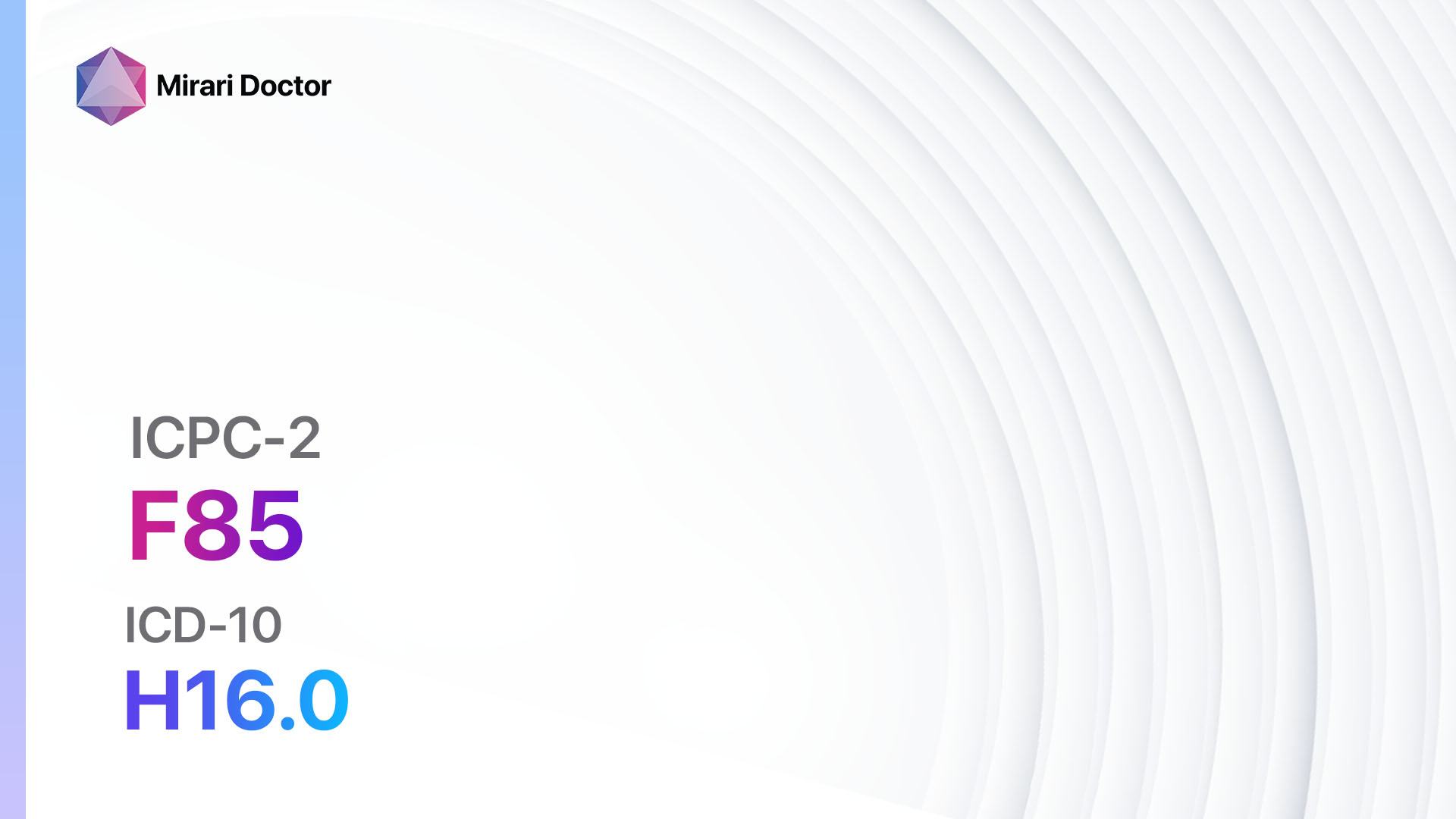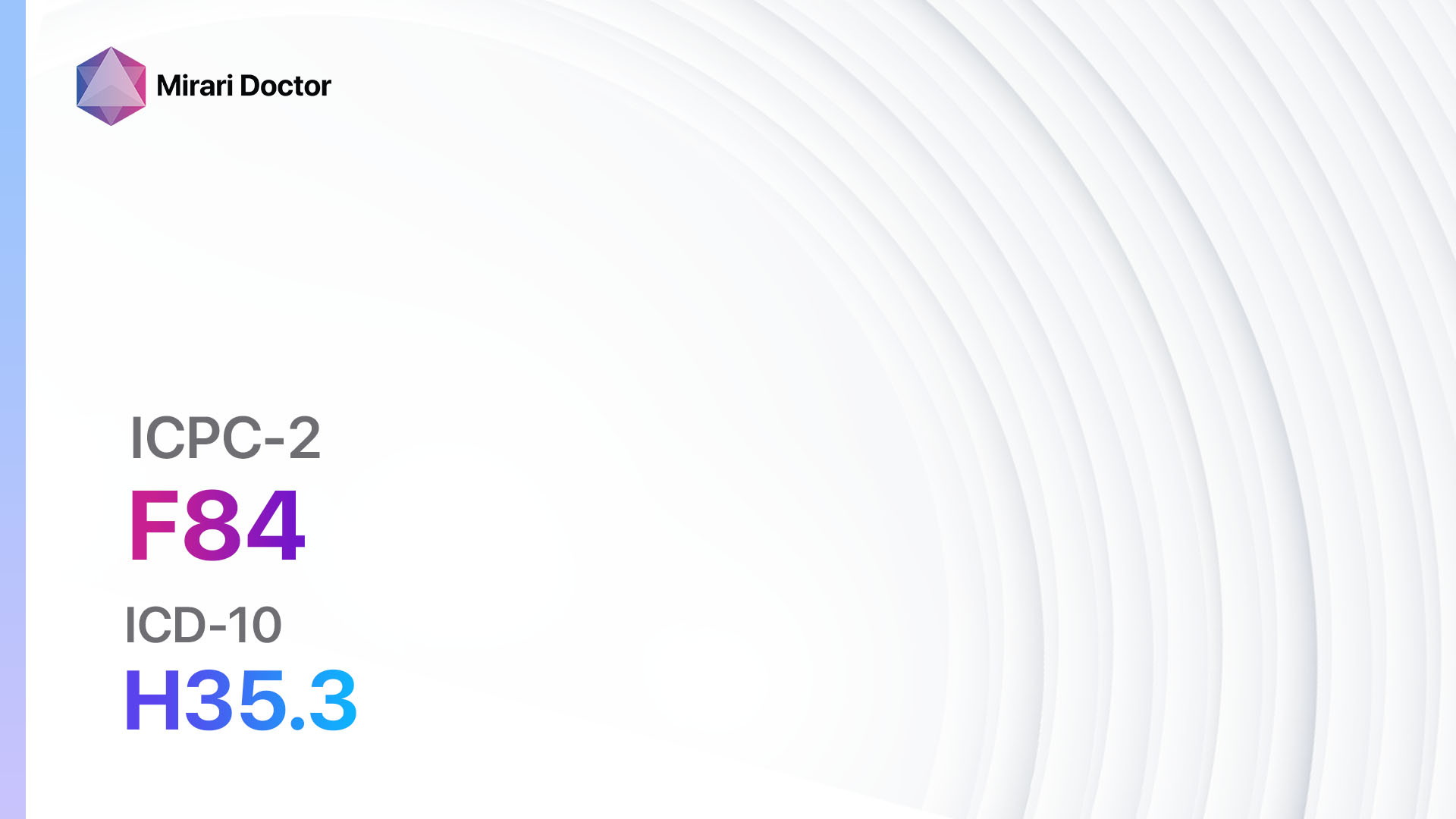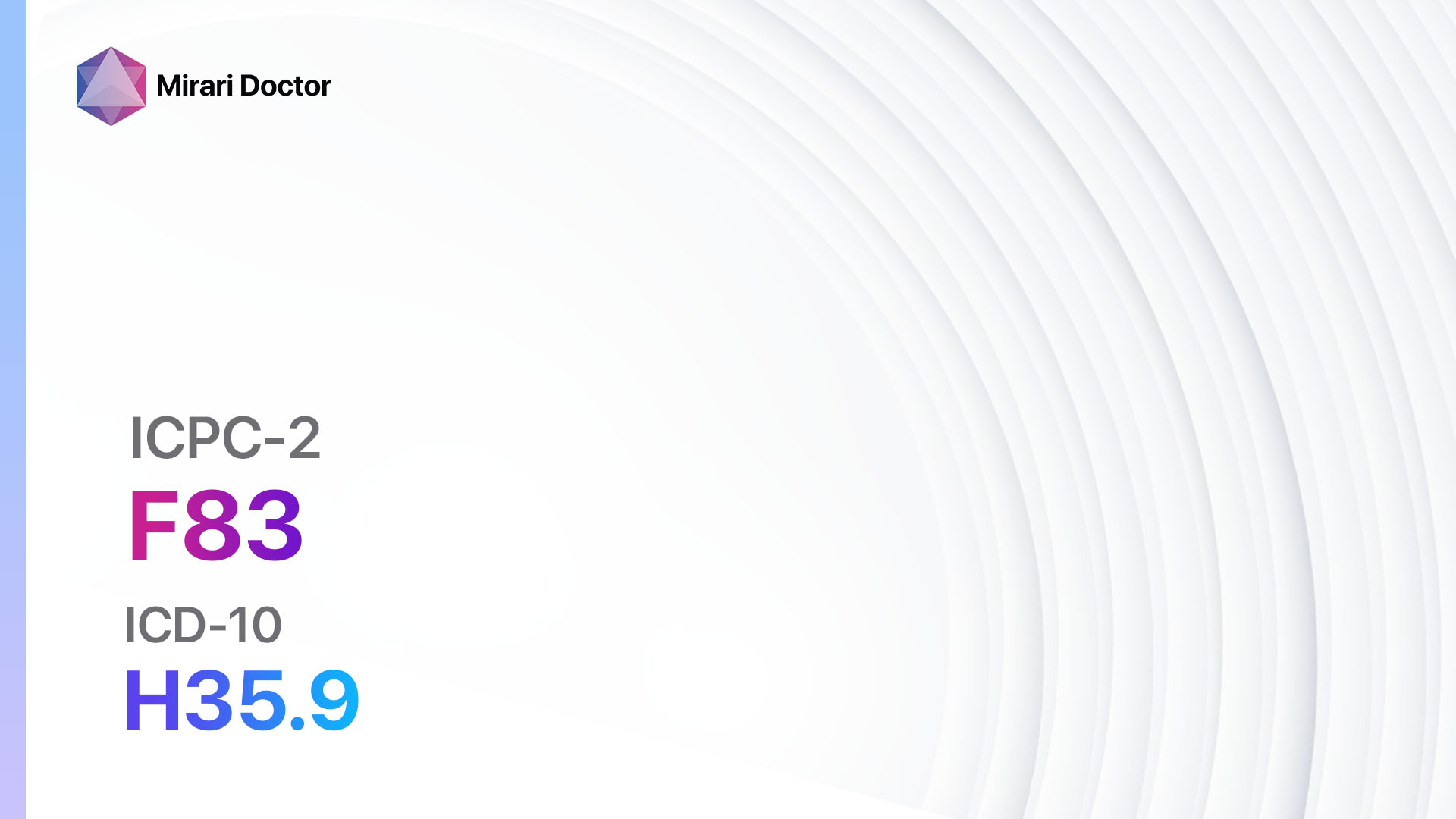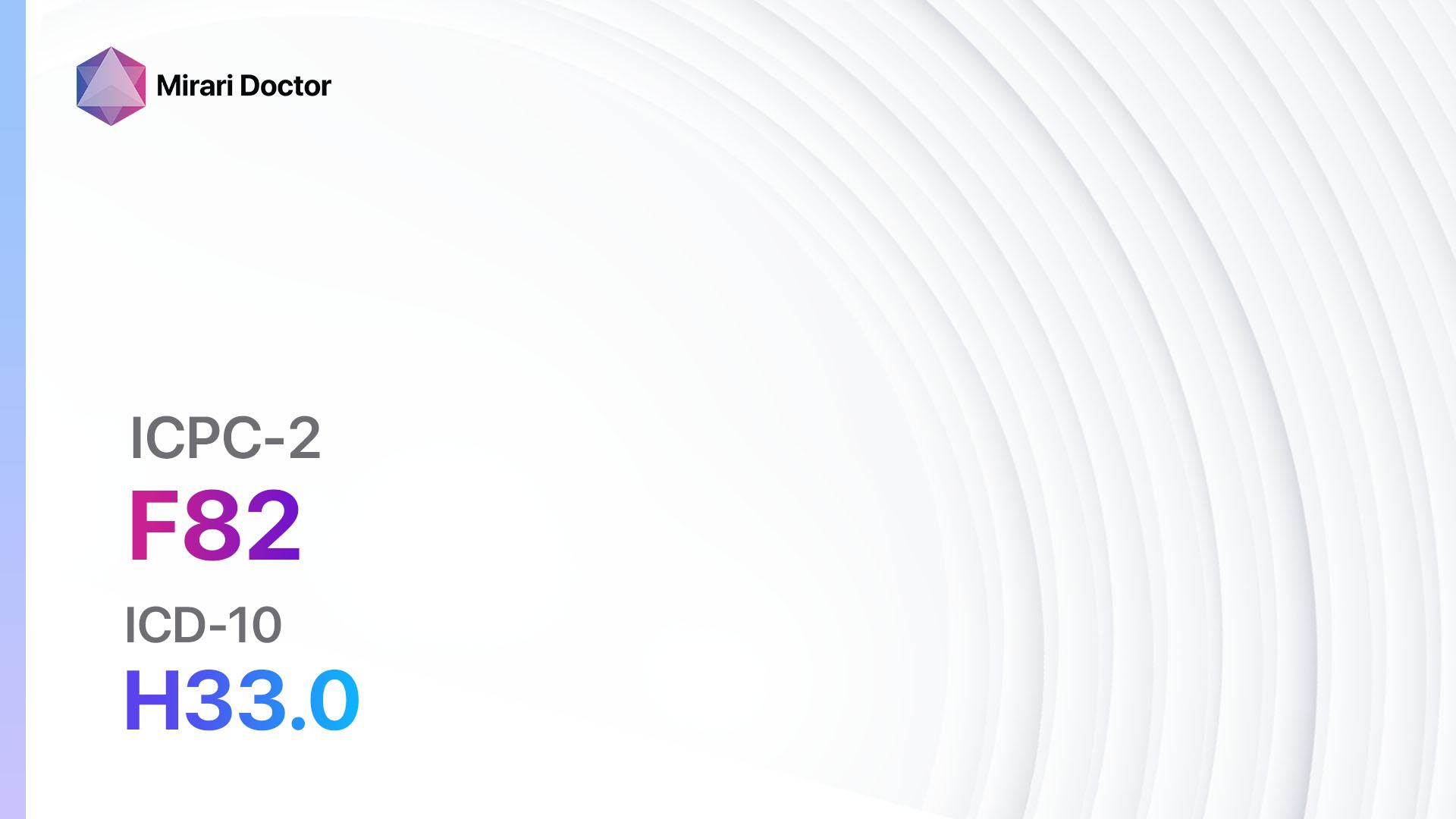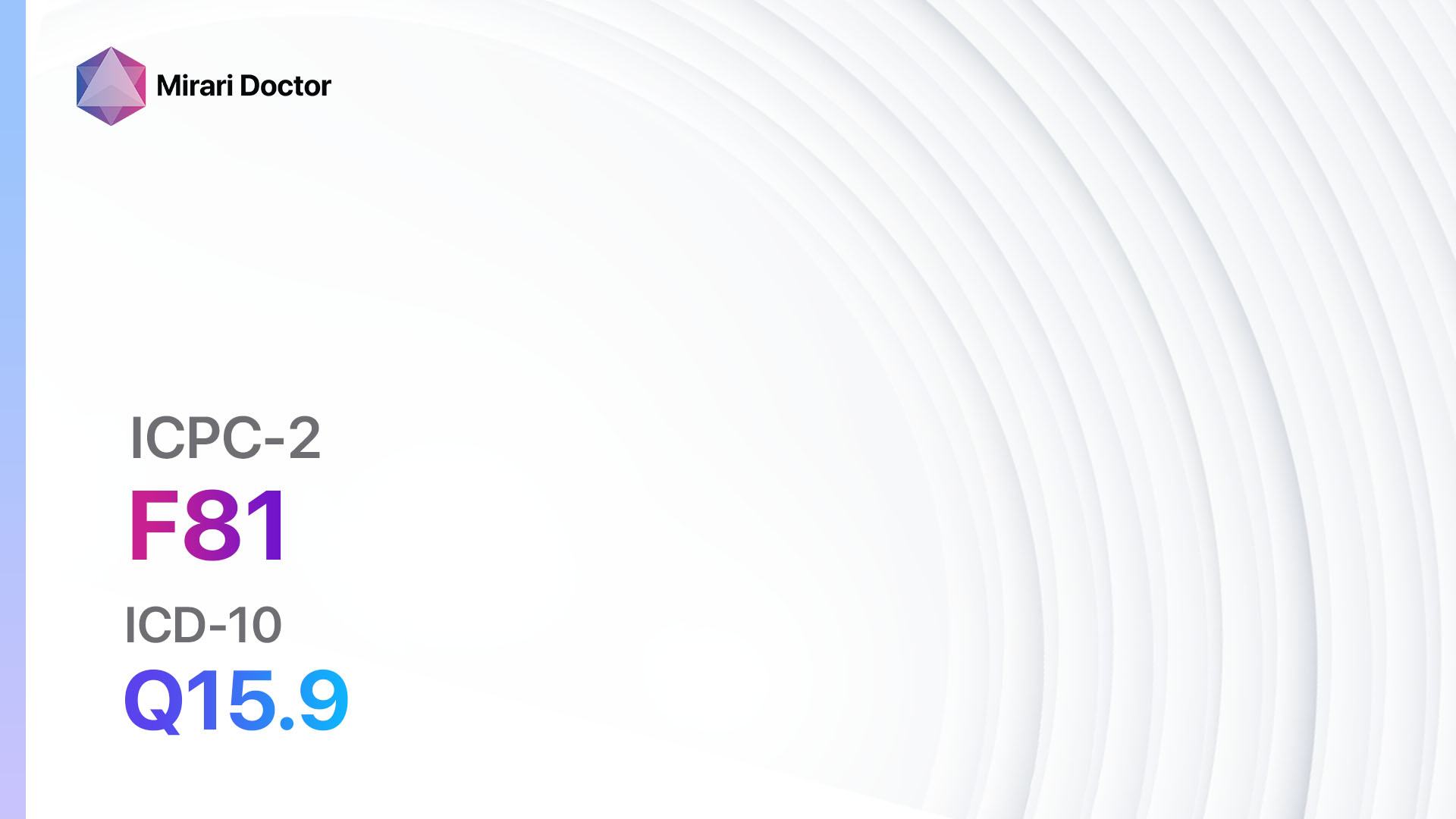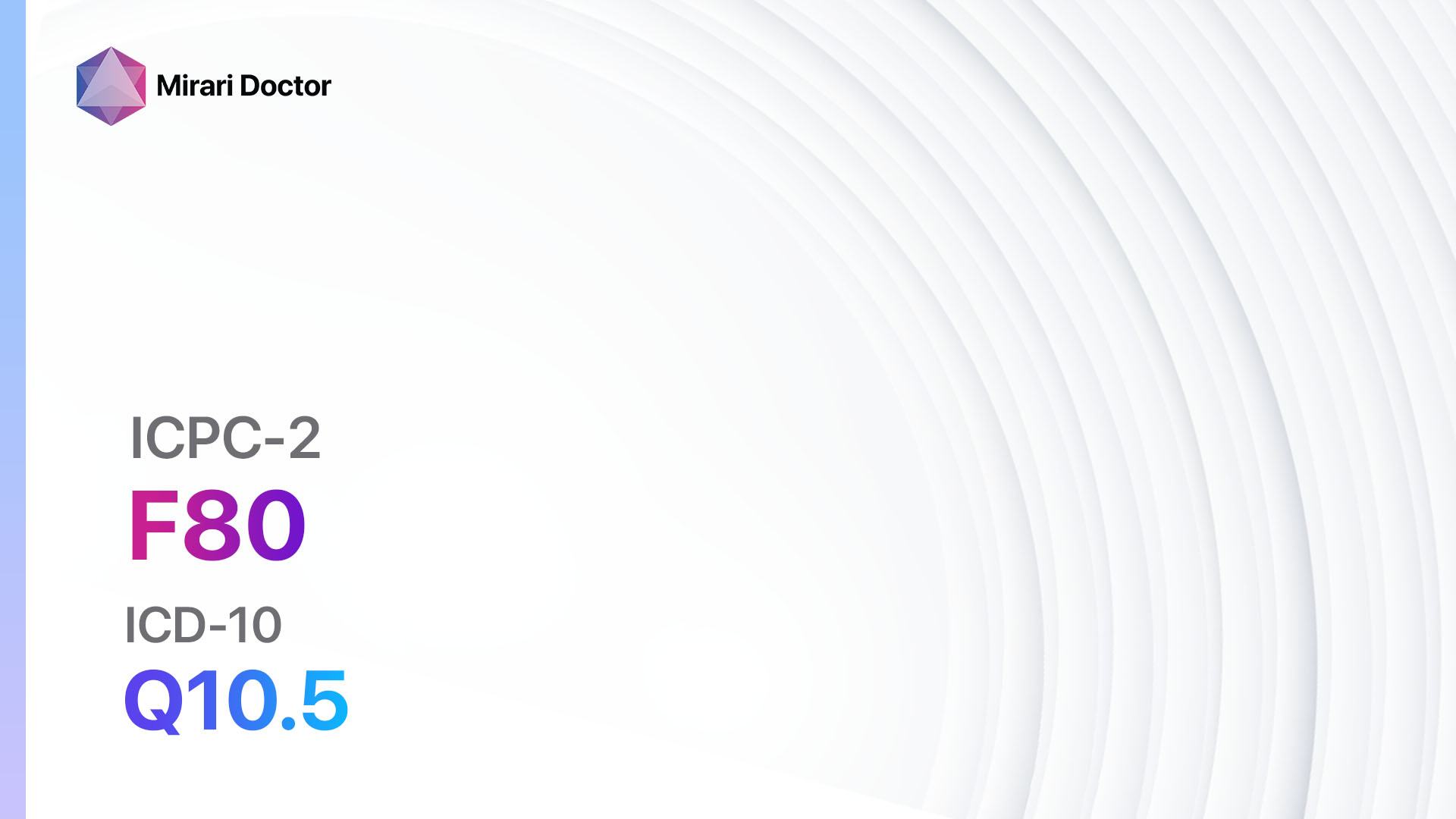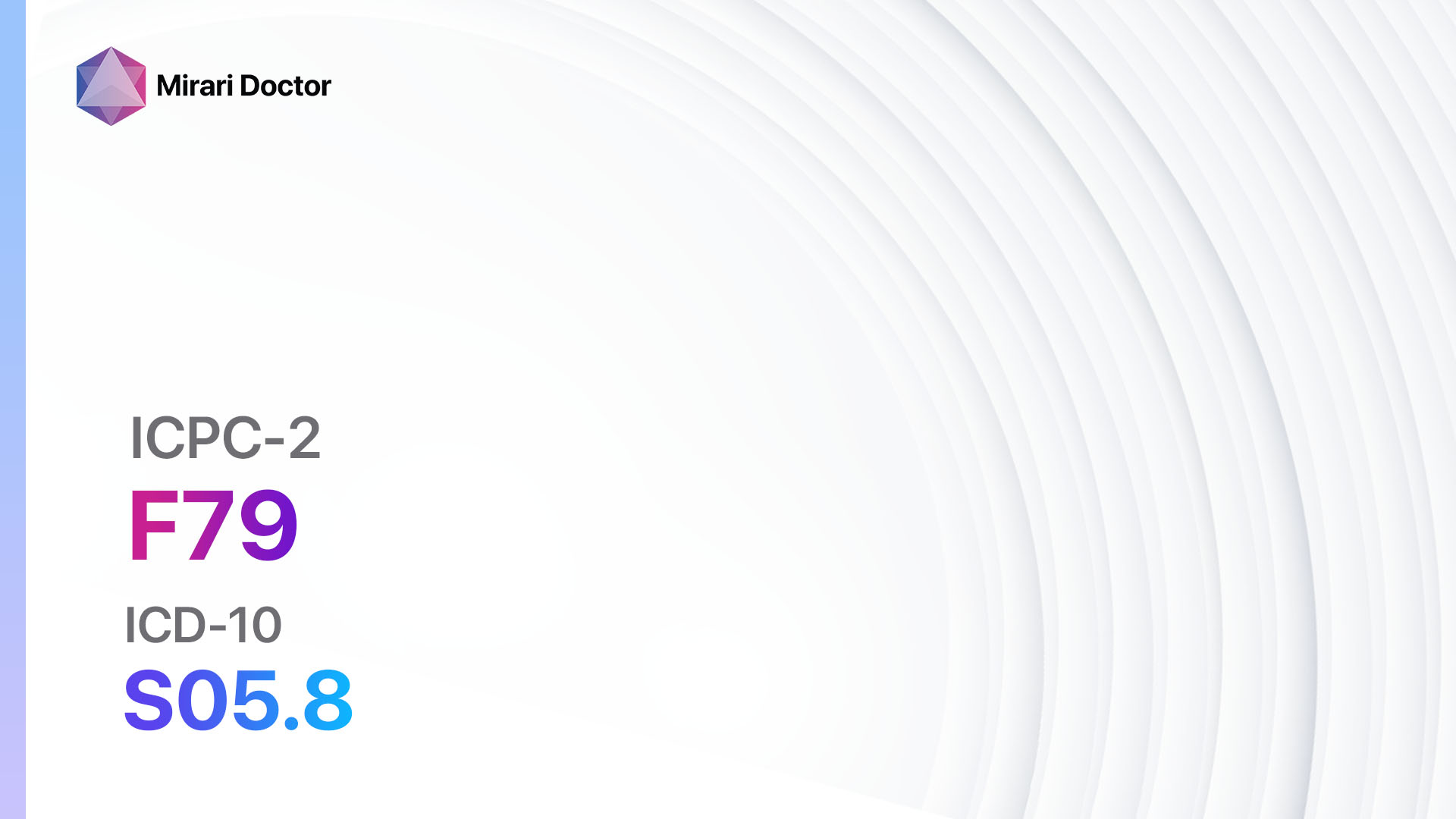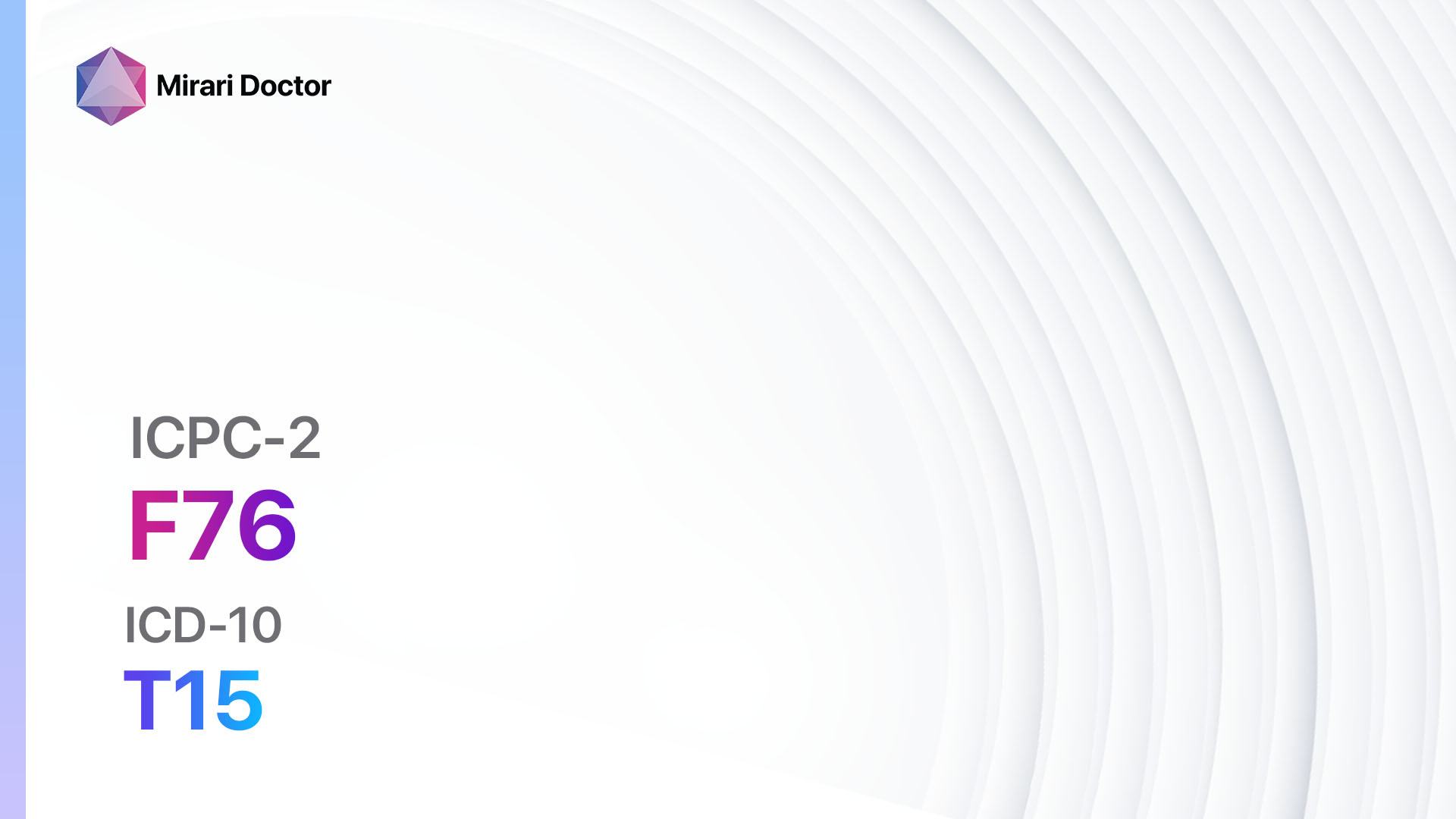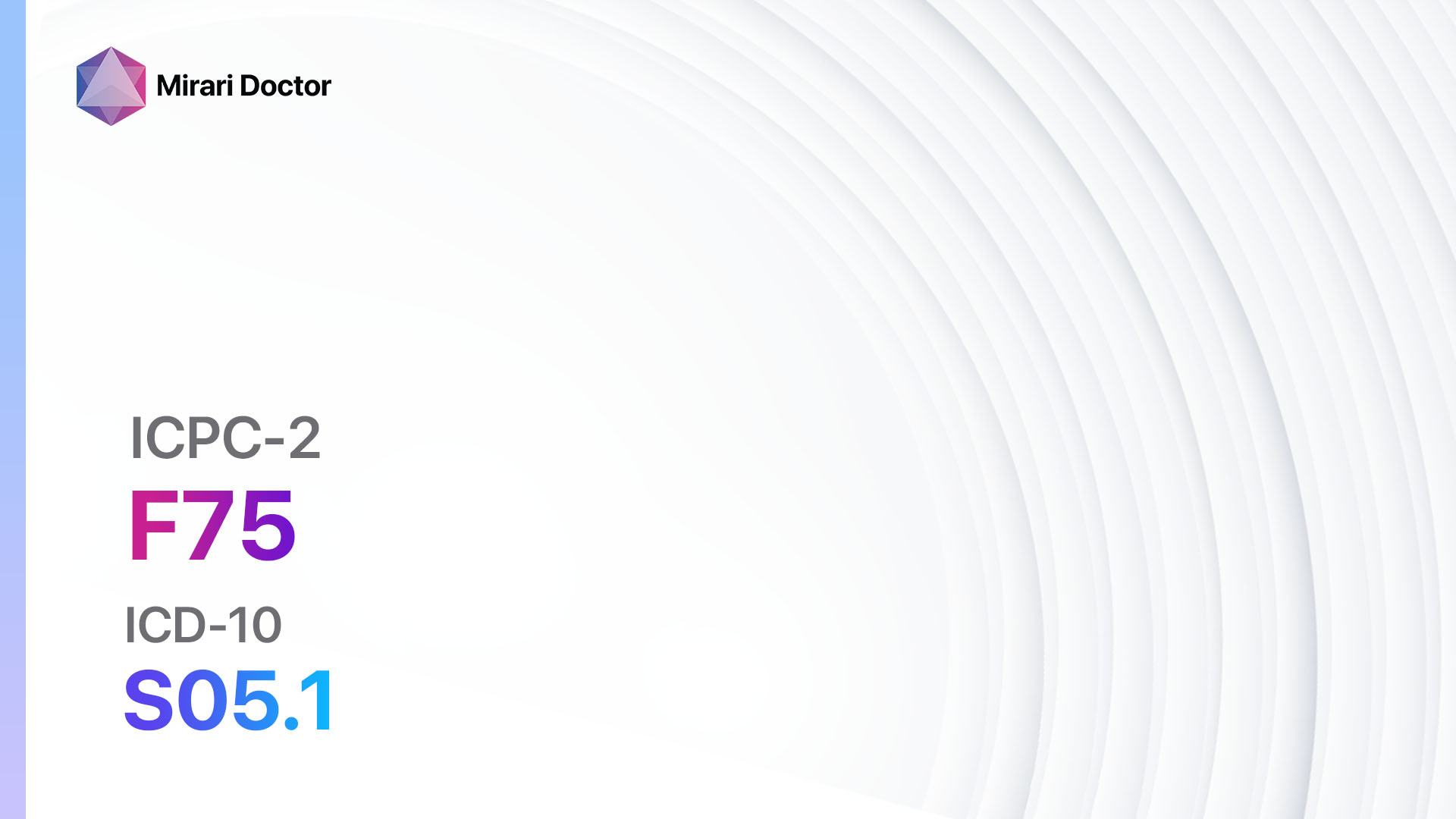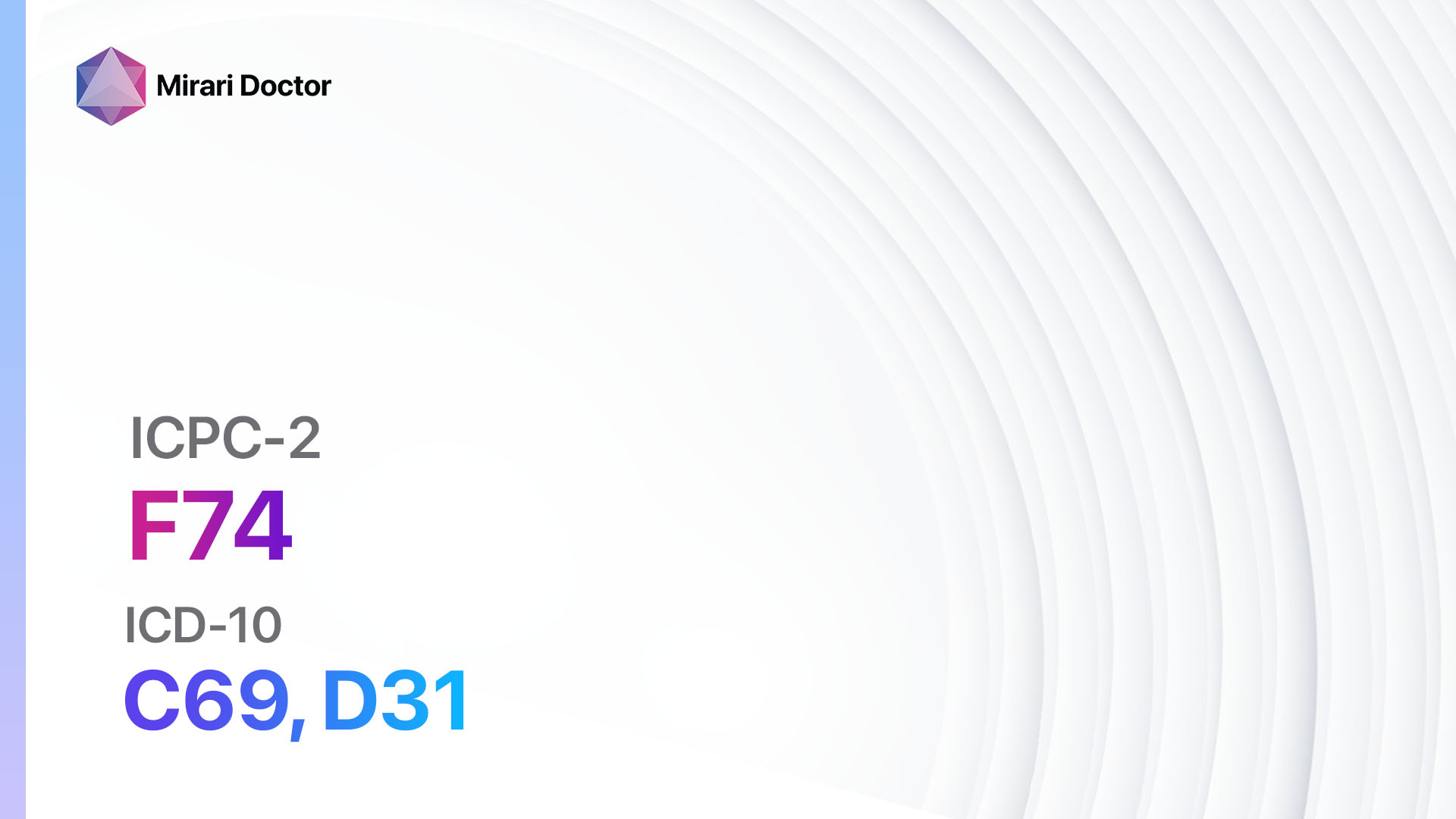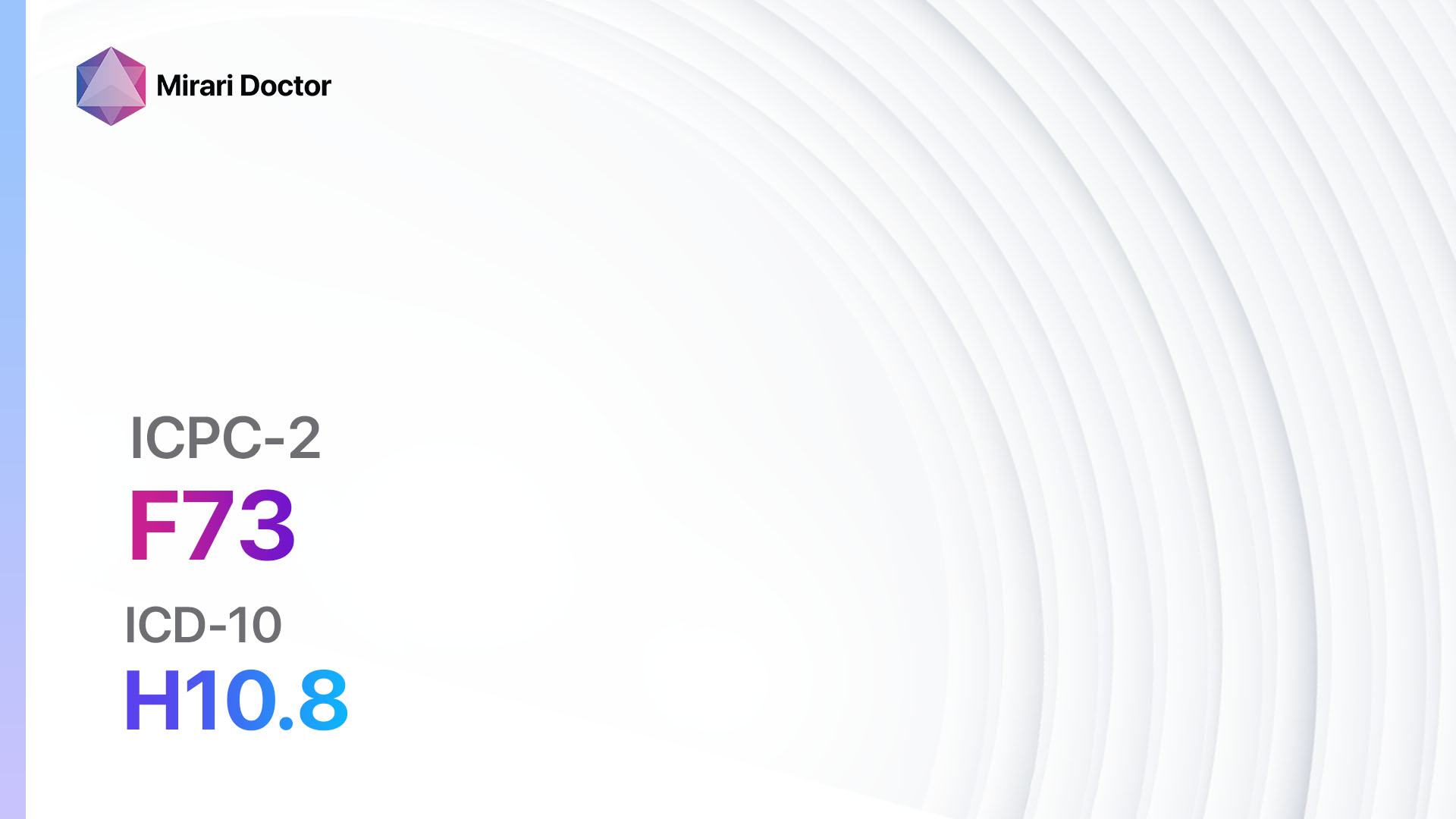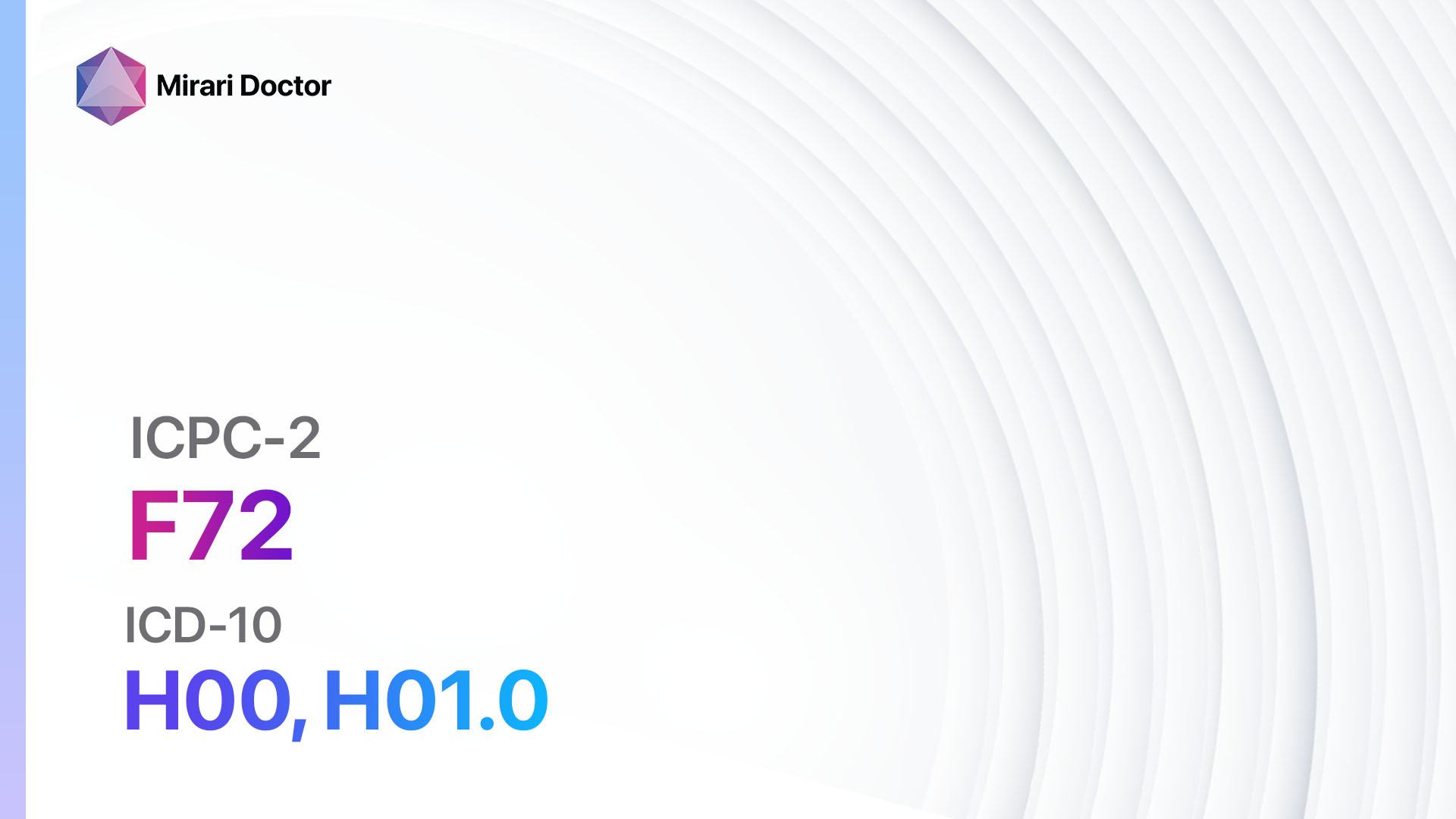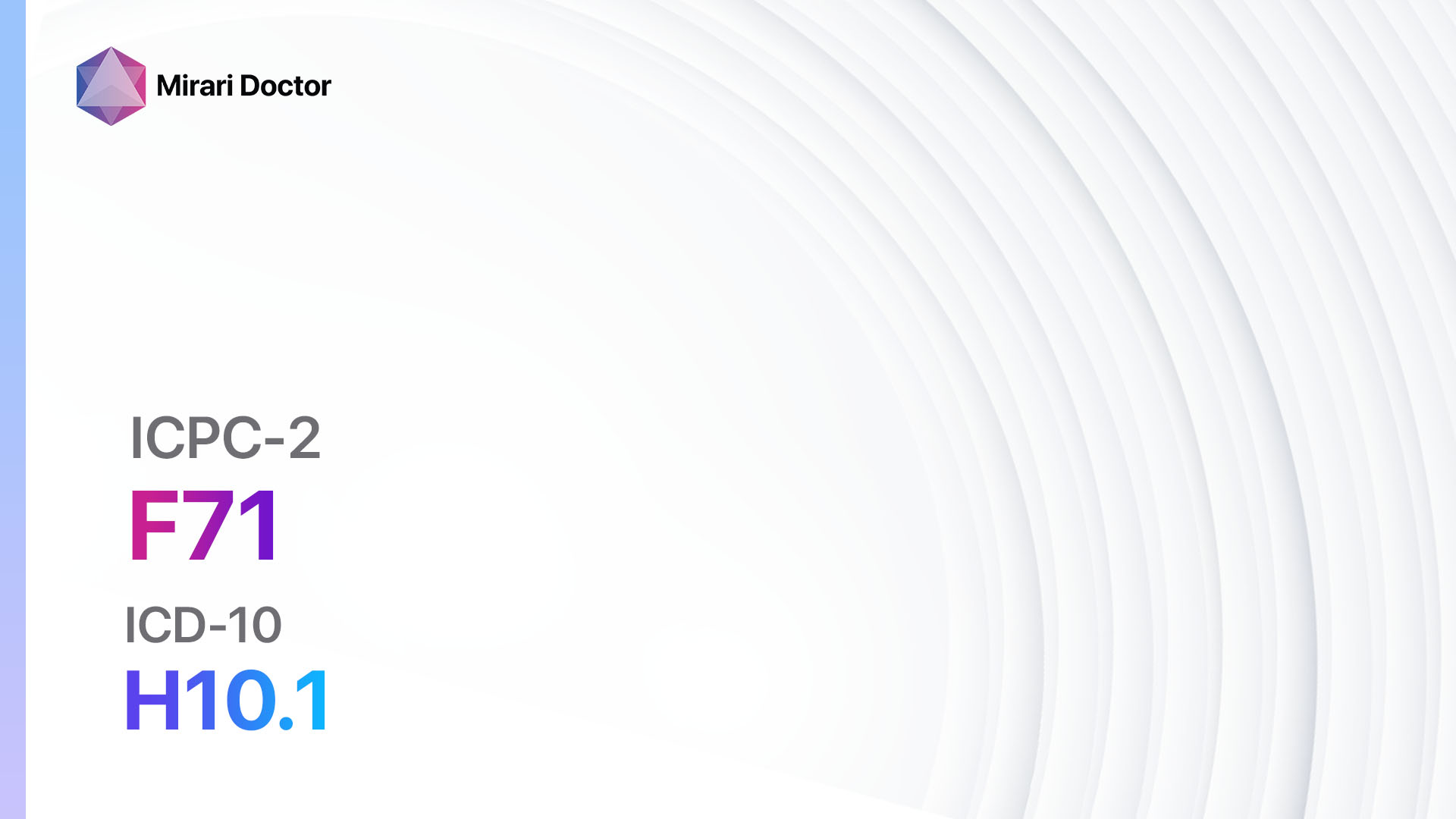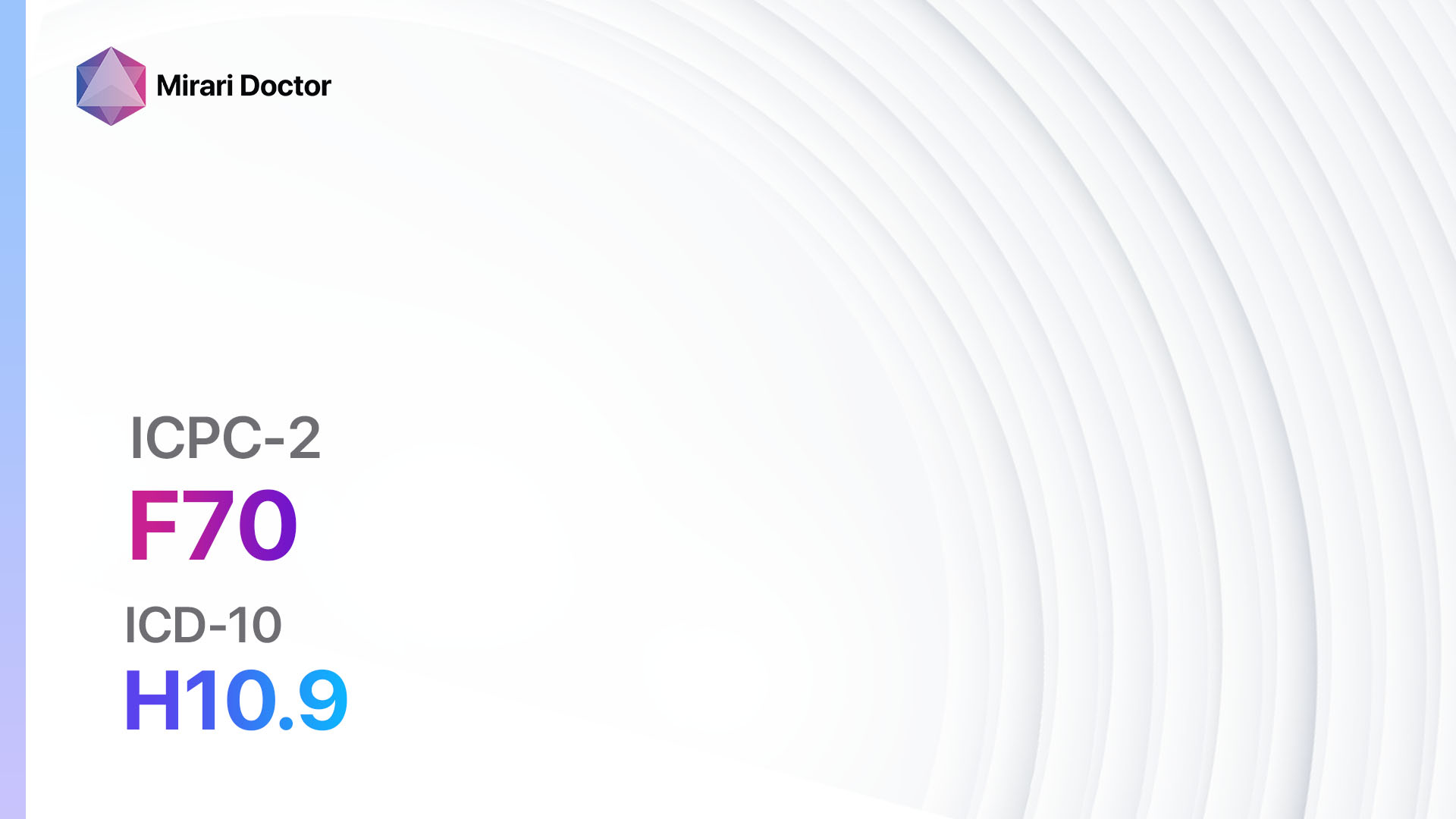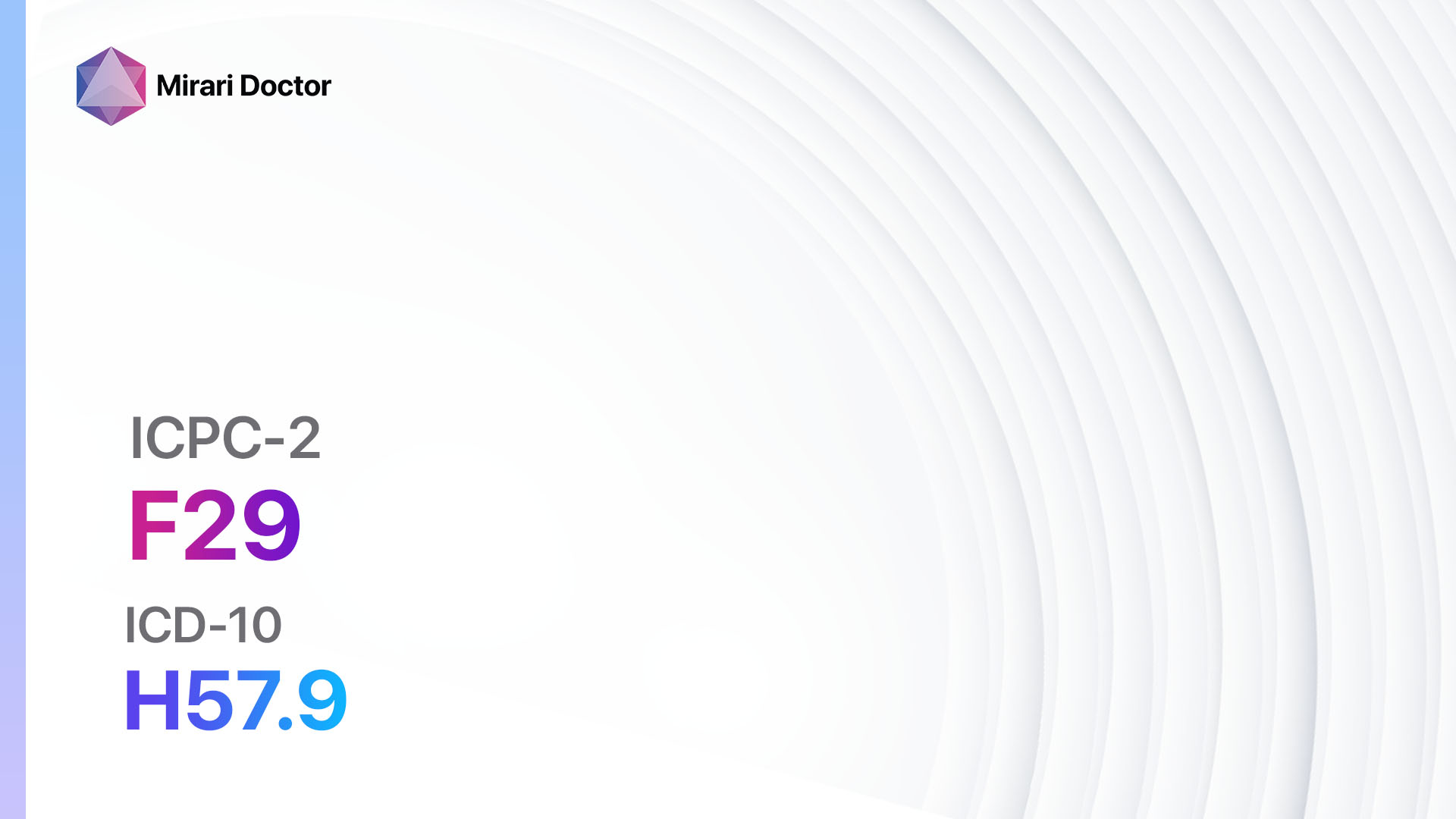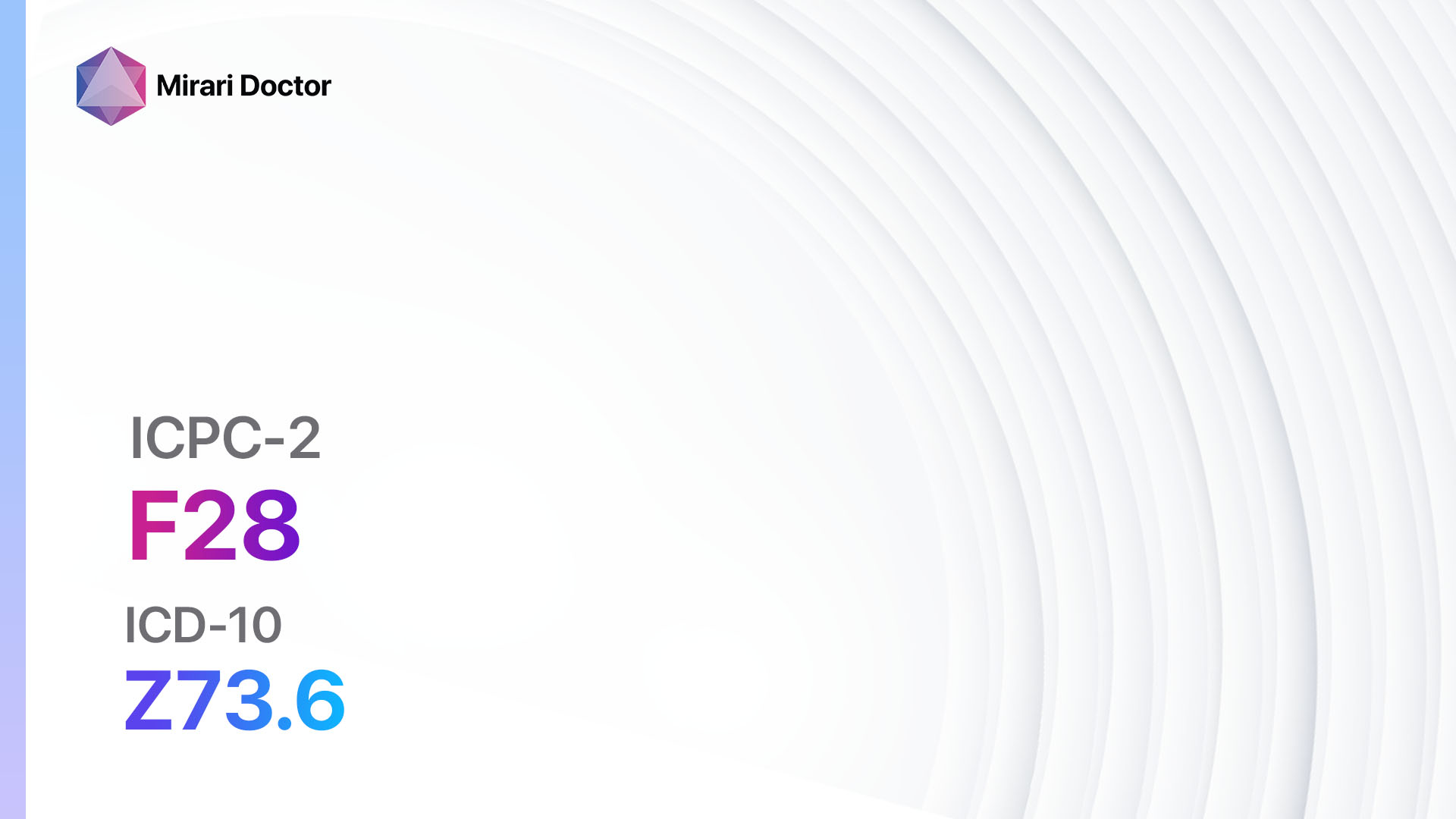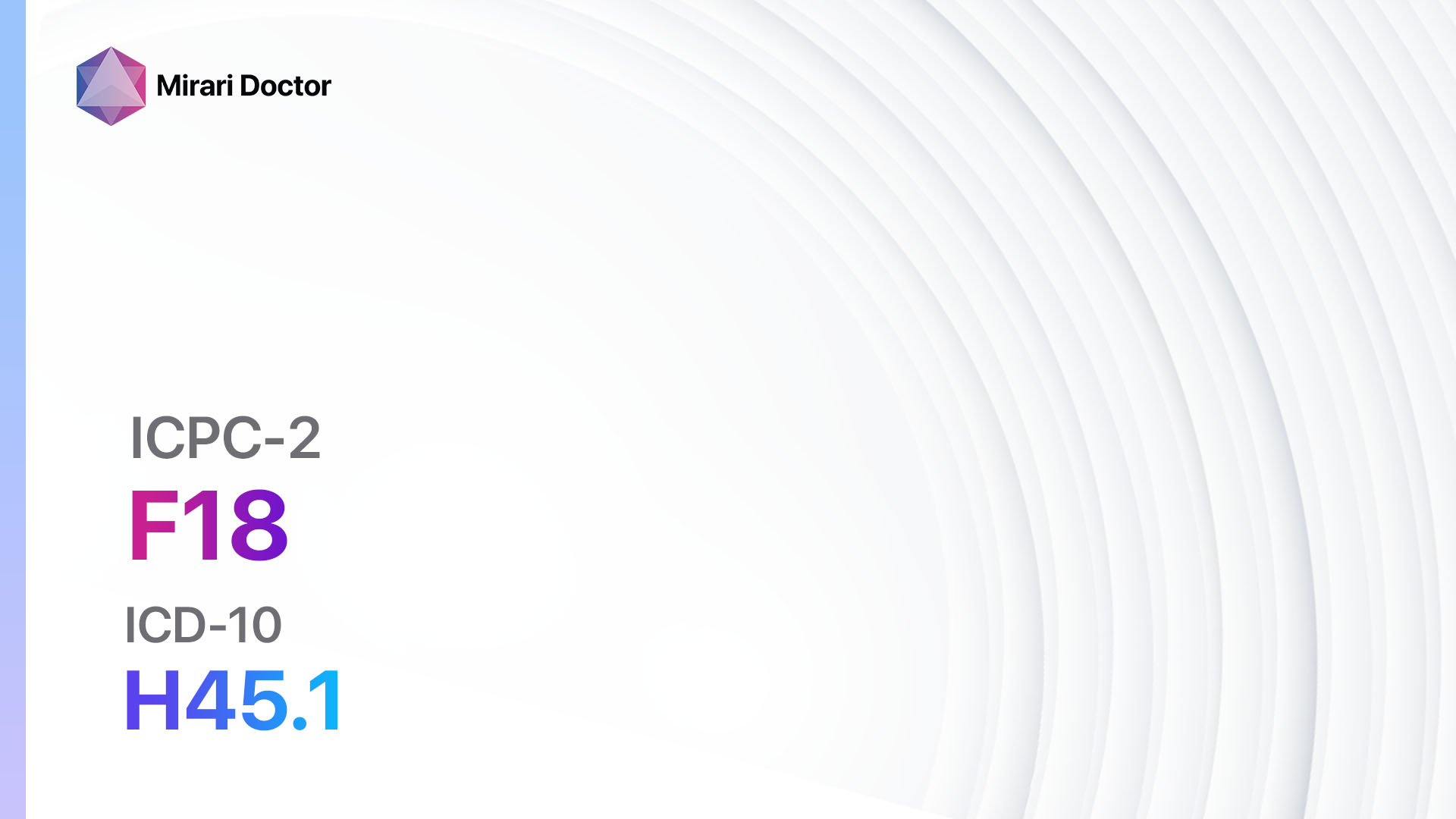
Introduction
Contact lens symptom/complaint refers to any discomfort, pain, or visual disturbances experienced by individuals who wear contact lenses. This condition is significant as it can affect the wearer’s vision and overall quality of life. The aim of this guide is to provide healthcare professionals with a comprehensive approach to diagnosing and managing contact lens symptoms/complaints.
Codes
- ICPC-2 Code: F18 Contact lens symptom/complaint[1]
- ICD-10 Code: H45.1 Disorders of cornea due to contact lens[2]
Symptoms
- Blurred vision: The wearer may experience blurry vision, both near and far.[3]
- Redness and irritation: The eyes may appear red and feel itchy or irritated.[4]
- Dryness: The eyes may feel dry and uncomfortable.[5]
- Foreign body sensation: The wearer may feel like there is something in their eye.[6]
- Discomfort or pain: The wearer may experience discomfort or pain in the eye.[7]
- Excessive tearing: The eyes may produce excessive tears.[8]
- Sensitivity to light: The wearer may be sensitive to bright lights.[9]
Causes
- Incorrect lens fit: Ill-fitting contact lenses can cause discomfort and visual disturbances.[10]
- Dry eyes: Individuals with dry eyes may experience contact lens-related symptoms.
- Allergic reactions: Some individuals may be allergic to the materials used in contact lenses or lens solutions.
- Eye infections: Contact lens wearers are at a higher risk of developing eye infections, which can cause symptoms.
- Contact lens solution sensitivity: Some individuals may be sensitive to the chemicals in contact lens solutions.
Diagnostic Steps
Medical History
- Inquire about the duration and frequency of contact lens wear.
- Ask about the type of contact lenses used (soft, rigid gas permeable, etc.).
- Assess the patient’s compliance with lens care and hygiene practices.
- Determine if the patient has a history of eye infections or allergies.
- Evaluate the patient’s overall eye health and any pre-existing eye conditions.
Physical Examination
- Inspect the eyes for redness, swelling, or discharge.
- Assess visual acuity with and without contact lenses.
- Examine the cornea for any signs of abrasions or ulcers.
- Evaluate the eyelids and conjunctiva for any abnormalities.
- Measure intraocular pressure to rule out glaucoma.
Laboratory Tests
- Cultures and smears: Collect samples from the eye to identify any bacterial or fungal infections.
- Tear film evaluation: Assess the quantity and quality of tears to determine if dry eyes are contributing to symptoms.
- Allergy testing: Perform allergy tests to identify any specific allergens that may be causing symptoms.
Diagnostic Imaging
- Slit-lamp examination: Use a slit lamp to examine the anterior segment of the eye, including the cornea, conjunctiva, and lens.
- Fluorescein staining: Apply fluorescein dye to the eye to detect any corneal abrasions or ulcers.
- Optical coherence tomography (OCT): Use OCT to obtain high-resolution images of the cornea and other structures of the eye.
Other Tests
- Contact lens fitting evaluation: Assess the fit of the contact lenses using keratometry or corneal topography.
- Tear breakup time (TBUT): Measure the time it takes for tears to break up on the ocular surface to evaluate tear film stability.
- Schirmer’s test: Measure the quantity of tears produced over a specific time period to assess tear production.
Follow-up and Patient Education
- Schedule follow-up appointments to monitor the patient’s progress and adjust treatment if necessary.
- Educate the patient on proper contact lens hygiene, including lens cleaning and storage.
- Advise the patient to remove contact lenses if symptoms persist or worsen.
- Discuss the importance of regular eye exams and the potential need for a change in contact lens type or fit.
Possible Interventions
Traditional Interventions
Medications:
Top 5 drugs for Contact lens symptom/complaint:
- Artificial tears (e.g., Refresh Tears, Systane):
- Cost: $5-$15 per bottle.
- Contraindications: Hypersensitivity to ingredients.
- Side effects: Temporary blurring of vision.
- Severe side effects: None reported.
- Drug interactions: None reported.
- Warning: Use as directed and avoid contamination of the bottle.
- Antihistamine eye drops (e.g., Zaditor, Alaway):
- Cost: $10-$20 per bottle.
- Contraindications: Hypersensitivity to ingredients.
- Side effects: Temporary stinging or burning sensation.
- Severe side effects: None reported.
- Drug interactions: None reported.
- Warning: Use as directed and avoid contact with soft contact lenses.
- Steroid eye drops (e.g., Prednisolone, Dexamethasone):
- Cost: $10-$30 per bottle.
- Contraindications: Active eye infections, glaucoma.
- Side effects: Temporary stinging or burning sensation, increased intraocular pressure.
- Severe side effects: Cataract formation, glaucoma.
- Drug interactions: None reported.
- Warning: Use under the supervision of an ophthalmologist and follow the prescribed dosage.
- Antibiotic eye drops (e.g., Tobramycin, Ciprofloxacin):
- Cost: $10-$30 per bottle.
- Contraindications: Hypersensitivity to ingredients.
- Side effects: Temporary stinging or burning sensation.
- Severe side effects: None reported.
- Drug interactions: None reported.
- Warning: Use as directed and complete the full course of treatment.
- Mast cell stabilizer eye drops (e.g., Alomide, Alocril):
- Cost: $20-$40 per bottle.
- Contraindications: Hypersensitivity to ingredients.
- Side effects: Temporary stinging or burning sensation.
- Severe side effects: None reported.
- Drug interactions: None reported.
- Warning: Use as directed and avoid contact with soft contact lenses.
Alternative Drugs:
- Oral antihistamines (e.g., Loratadine, Cetirizine): May help alleviate allergic symptoms associated with contact lens wear. Cost: $5-$20 per bottle.
- Topical corticosteroids (e.g., Hydrocortisone cream): Can be used for short-term relief of inflammation and itching. Cost: $5-$15 per tube.
- Nonsteroidal anti-inflammatory drugs (NSAIDs) (e.g., Ketorolac, Bromfenac): May provide relief from pain and inflammation. Cost: $10-$30 per bottle.
Surgical Procedures:
- In severe cases where traditional interventions fail to provide relief, surgical procedures may be considered. These may include:
- Corneal transplant: In cases of corneal damage or scarring that cannot be resolved with medication. Cost: $20,000-$50,000.
- Punctal occlusion: Plugging the tear ducts to reduce tear drainage and increase tear film stability. Cost: $500-$1,500.
Alternative Interventions
- Orthokeratology: The use of specially designed contact lenses to reshape the cornea overnight, providing clear vision during the day. Cost: $1,000-$3,000.
- Scleral lenses: Large-diameter contact lenses that vault over the cornea, providing a smooth optical surface and improved comfort. Cost: $1,000-$2,000.
- Eye exercises: Specific eye exercises may help improve eye muscle coordination and reduce symptoms. Cost: Free.
- Warm compresses: Applying warm compresses to the eyes can help relieve dryness and discomfort. Cost: Free.
- Blink exercises: Regularly blinking and consciously blinking more often can help improve tear film distribution. Cost: Free.
Lifestyle Interventions
- Proper contact lens hygiene: Emphasize the importance of cleaning and disinfecting contact lenses as directed. Cost: Varies depending on the lens care products used.
- Regular breaks from contact lens wear: Encourage the patient to take breaks from wearing contact lenses to allow the eyes to rest and recover. Cost: Free.
- Avoiding environmental triggers: Advise the patient to avoid allergens or irritants that may exacerbate symptoms. Cost: Free.
- Maintaining good overall eye health: Encourage the patient to eat a healthy diet, stay hydrated, and get regular exercise to support eye health. Cost: Varies depending on lifestyle choices.
It is important to note that the cost ranges provided are approximate and may vary depending on the location and availability of the interventions.
Mirari Cold Plasma Alternative Intervention
Understanding Mirari Cold Plasma
- Safe and Non-Invasive Treatment: Mirari Cold Plasma is a safe and non-invasive treatment option for various skin conditions. It does not require incisions, minimizing the risk of scarring, bleeding, or tissue damage.
- Efficient Extraction of Foreign Bodies: Mirari Cold Plasma facilitates the removal of foreign bodies from the skin by degrading and dissociating organic matter, allowing easier access and extraction.
- Pain Reduction and Comfort: Mirari Cold Plasma has a local analgesic effect, providing pain relief during the treatment, making it more comfortable for the patient.
- Reduced Risk of Infection: Mirari Cold Plasma has antimicrobial properties, effectively killing bacteria and reducing the risk of infection.
- Accelerated Healing and Minimal Scarring: Mirari Cold Plasma stimulates wound healing and tissue regeneration, reducing healing time and minimizing the formation of scars.
Mirari Cold Plasma Prescription
Video instructions for using Mirari Cold Plasma Device – F18 Contact lens symptom/complaint (ICD-10:H45.1)
| Mild | Moderate | Severe |
| Mode setting: 1 (Infection) Location: 7 (Neuro system & ENT) Morning: 15 minutes, Evening: 15 minutes |
Mode setting: 1 (Infection) Location: 7 (Neuro system & ENT) Morning: 30 minutes, Lunch: 30 minutes, Evening: 30 minutes |
Mode setting: 1 (Infection) Location: 7 (Neuro system & ENT) Morning: 30 minutes, Lunch: 30 minutes, Evening: 30 minutes |
| Mode setting: 2 (Wound Healing) Location: 7 (Neuro system & ENT) Morning: 15 minutes, Evening: 15 minutes |
Mode setting: 2 (Wound Healing) Location: 7 (Neuro system & ENT) Morning: 30 minutes, Lunch: 30 minutes, Evening: 30 minutes |
Mode setting: 2 (Wound Healing) Location: 7 (Neuro system & ENT) Morning: 30 minutes, Lunch: 30 minutes, Evening: 30 minutes |
| Mode setting: 3 (Antiviral Therapy) Location: 7 (Neuro system & ENT) Morning: 15 minutes, Evening: 15 minutes |
Mode setting: 3 (Antiviral Therapy) Location: 7 (Neuro system & ENT) Morning: 30 minutes, Lunch: 30 minutes, Evening: 30 minutes |
Mode setting: 3 (Antiviral Therapy) Location: 7 (Neuro system & ENT) Morning: 30 minutes, Lunch: 30 minutes, Evening: 30 minutes |
| Total Morning: 45 minutes approx. $7.50 USD, Evening: 45 minutes approx. $7.50 USD |
Total Morning: 90 minutes approx. $15 USD, Lunch: 90 minutes approx. $15 USD, Evening: 90 minutes approx. $15 USD, |
Total Morning: 90 minutes approx. $15 USD, Lunch: 90 minutes approx. $15 USD, Evening: 90 minutes approx. $15 USD, |
| Usual treatment for 7-60 days approx. $105 USD – $900 USD | Usual treatment for 6-8 weeks approx. $1,890 USD – $2,520 USD |
Usual treatment for 3-6 months approx. $4,050 USD – $8,100 USD
|
 |
|
Use the Mirari Cold Plasma device to treat Contact lens symptom/complaint effectively.
WARNING: MIRARI COLD PLASMA IS DESIGNED FOR THE HUMAN BODY WITHOUT ANY ARTIFICIAL OR THIRD PARTY PRODUCTS. USE OF OTHER PRODUCTS IN COMBINATION WITH MIRARI COLD PLASMA MAY CAUSE UNPREDICTABLE EFFECTS, HARM OR INJURY. PLEASE CONSULT A MEDICAL PROFESSIONAL BEFORE COMBINING ANY OTHER PRODUCTS WITH USE OF MIRARI.
Step 1: Cleanse the Skin
- Start by cleaning the affected area of the skin with a gentle cleanser or mild soap and water. Gently pat the area dry with a clean towel.
Step 2: Prepare the Mirari Cold Plasma device
- Ensure that the Mirari Cold Plasma device is fully charged or has fresh batteries as per the manufacturer’s instructions. Make sure the device is clean and in good working condition.
- Switch on the Mirari device using the power button or by following the specific instructions provided with the device.
- Some Mirari devices may have adjustable settings for intensity or treatment duration. Follow the manufacturer’s instructions to select the appropriate settings based on your needs and the recommended guidelines.
Step 3: Apply the Device
- Place the Mirari device in direct contact with the affected area of the skin. Gently glide or hold the device over the skin surface, ensuring even coverage of the area experiencing.
- Slowly move the Mirari device in a circular motion or follow a specific pattern as indicated in the user manual. This helps ensure thorough treatment coverage.
Step 4: Monitor and Assess:
- Keep track of your progress and evaluate the effectiveness of the Mirari device in managing your Contact lens symptom/complaint. If you have any concerns or notice any adverse reactions, consult with your health care professional.
Note
This guide is for informational purposes only and should not replace the advice of a medical professional. Always consult with your healthcare provider or a qualified medical professional for personal advice, diagnosis, or treatment. Do not solely rely on the information presented here for decisions about your health. Use of this information is at your own risk. The authors of this guide, nor any associated entities or platforms, are not responsible for any potential adverse effects or outcomes based on the content.
Mirari Cold Plasma System Disclaimer
- Purpose: The Mirari Cold Plasma System is a Class 2 medical device designed for use by trained healthcare professionals. It is registered for use in Thailand and Vietnam. It is not intended for use outside of these locations.
- Informational Use: The content and information provided with the device are for educational and informational purposes only. They are not a substitute for professional medical advice or care.
- Variable Outcomes: While the device is approved for specific uses, individual outcomes can differ. We do not assert or guarantee specific medical outcomes.
- Consultation: Prior to utilizing the device or making decisions based on its content, it is essential to consult with a Certified Mirari Tele-Therapist and your medical healthcare provider regarding specific protocols.
- Liability: By using this device, users are acknowledging and accepting all potential risks. Neither the manufacturer nor the distributor will be held accountable for any adverse reactions, injuries, or damages stemming from its use.
- Geographical Availability: This device has received approval for designated purposes by the Thai and Vietnam FDA. As of now, outside of Thailand and Vietnam, the Mirari Cold Plasma System is not available for purchase or use.
References
- World Health Organization. (2022). International Classification of Primary Care (ICPC-2). Retrieved from https://www.who.int/standards/classifications/other-classifications/international-classification-of-primary-care
- World Health Organization. (2022). International Statistical Classification of Diseases and Related Health Problems (ICD-10). Retrieved from https://www.who.int/standards/classifications/classification-of-diseases
- Efron, N., Morgan, P. B., & Woods, C. A. (2011). An evaluation of contrast optics in man. Clinical and Experimental Optometry, 94(6), 560-569.
- Nichols, J. J., & Sinnott, L. T. (2011). Tear film, contact lens, and patient-related factors associated with contact lens-related dry eye. Investigative Ophthalmology & Visual Science, 52(3), 1573-1581.
- Dumbleton, K., Caffery, B., Dogru, M., Hickson-Curran, S., Kern, J., Kojima, T., … & Tsubota, K. (2013). The TFOS International Workshop on Contact Lens Discomfort: report of the subcommittee on epidemiology. Investigative Ophthalmology & Visual Science, 54(11), TFOS20-TFOS36.
- Pritchard, N., Fonn, D., & Brazeau, D. (1999). Discontinuation of contact lens wear: a survey. International Contact Lens Clinic, 26(6), 157-162.
- Dumbleton, K., Woods, C. A., Jones, L. W., & Fonn, D. (2013). The impact of contemporary contact lenses on contact lens discontinuation. Eye & Contact Lens, 39(1), 93-99.
- Begley, C. G., Chalmers, R. L., Abetz, L., Venkataraman, K., Gillespie, P., Chalmers, R., … & Simpson, T. (2001). The relationship between habitual patient-reported symptoms and clinical signs among patients with dry eye of varying severity. Investigative Ophthalmology & Visual Science, 42(11), 2643-2651.
- Chalmers, R. L., Begley, C. G., & Caffery, B. (2010). Validation of the 5-item dry eye questionnaire (DEQ-5): discrimination across self-assessed severity and aqueous tear deficient dry eye diagnoses. Contact Lens and Anterior Eye, 33(2), 55-60.
- Young, G., Veys, J., Pritchard, N., & Coleman, S. (2002). A multi-centre study of lapsed contact lens wearers. Ophthalmic and Physiological Optics, 22(6), 516-527.
Related articles
Made in USA


